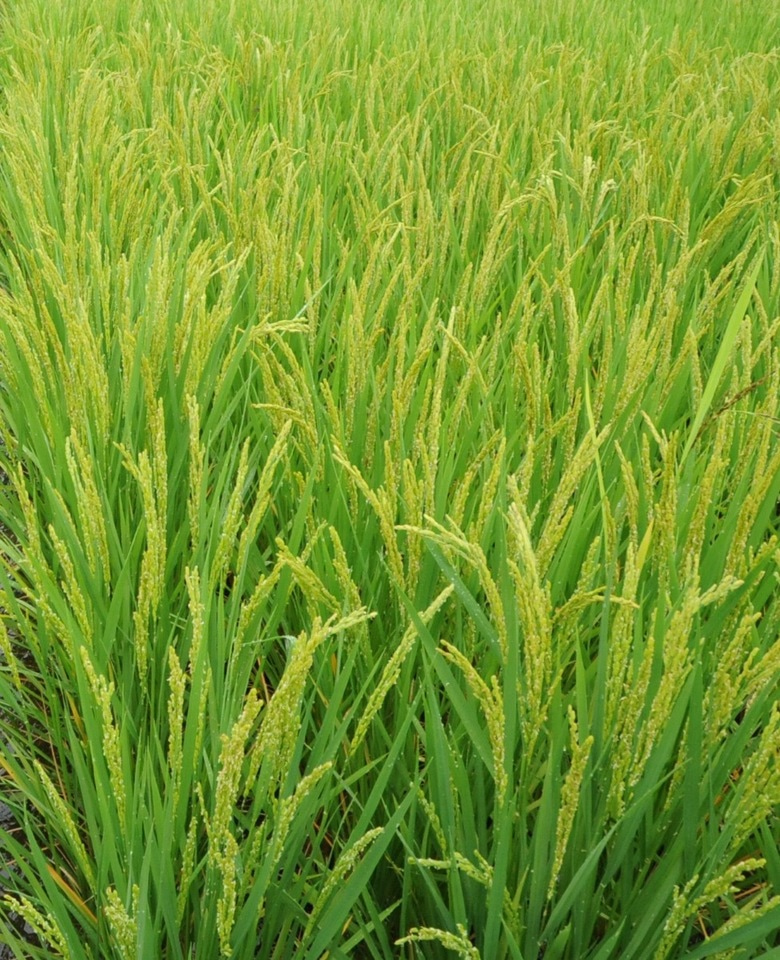By Jingying Zhang and Yang Bai
As early as September 2016, we discussed the idea of performing the root microbiota of a large group of rice varieties. This was a very cutting-edge and well-received hot scientific question at that time, but it was also a big challenge for our newly formed research group. Luckily, with the support of Prof. Chu, we have overcome various problems and succeeded collected all root samples in a short period of time (Fig. 1). A new challenging journey opened.

Figure 1. a) Rice varieties have been planted in two fields on Lingshui Farm, Hainan Province, China. b) Collection of the rice samples with collaborators.
To our surprise, very large differences presented in the root microbiota between indica and japonica varieties. This similar trend was occurred in two separated fields. This is a big discovery, as people generally only know that there are many differences in plant architecture and seed shape between indica and japonica. Root microbiota difference inspires us to explore whether the root microbes can serve as a biomarker to distinguish indica and japonica varieties. Therefore, we established a model using a random-forest machine-learning approach, which can accurately predict indica and japonica varieties in the tested fields, but data from more rice varieties grown in more different geographical locations are likely to further improve model accuracy.
It is interesting that indica enriched more bacteria annotated with the function of nitrogen metabolism. The nitrogen-use efficiency of indica varieties of rice is higher than that of japonica varieties. Our collaborator, Prof. Chu, had reported that the variation in a nitrate-transporter gene, NRT1.1B (OsNPF6.5), contributed to the nitrate-use divergence between indica and japonica. Thus, we hypothesized that the differences in the root microbiota of indica and japonica are regulated by NRT1.1B. Comparison of root-associated microbiota of wild-type and the nrt1.1b mutant, we found that NRT1.1B is associated with the recruitment of approximately half indica-enriched bacterial taxa. Notably, the relative abundance of root bacteria that harbor key genes in the ammonification process is defective in root microbiome of the nrt1.1b mutant, indicating that these root microbes may catalyse the formation of ammonium in the root environment.
To explore the root bacteria’s function on nitrogen use in rice, we started to cultivate the rice root microbiota. To avoid the chimera formation in the high-throughput protocol to identify root bacteria by 454 pyrosequencing in Arabidopsis, we established a new method to identify cultivated bacteria in each well separately. We successfully cultivated more than 70 percent of bacterial species that were reproducibly detectable in rice roots. All pure strains are deposited at two national culture collection centers, China Natural Gene Bank (CNGB) and Agricultural Culture Collection of China (ACCC), providing a resource for functional research of root microbiota by more scientists.
To study the function of the indica- or japonica-enriched bacteria, we conducted a series of gnotobiotic experiments with synthetic communities (SynComs) under laboratory conditions. The indica- or japonica-enriched bacteria had no advantage on plant growth under inorganic nitrogen condition, which was likely because bacteria in the SynComs competed with rice plants for inorganic nitrogen. More than 90% of the nitrogen source in the soil is organic nitrogen that plants cannot directly utilize. In our experiment, we found that plants grew badly under the supply of organic nitrogen. When we added the indica- or japonica-enriched SynCom to the system, rice plants can to some extent alleviate the stress (Fig. 2). These results provide an evidence that rice coordinates root microorganisms for proper growth in the field.

Figure 2. The plant growth in the gnotobiotic experiments with or without microorganisms under the supply of inorganic or organic nitrogen.
This work was completed with the support of institute of genetics and developmental biology, Chinese Academy of Sciences. Here, thanks to all the collaborators for their hard work.




Please sign in or register for FREE
If you are a registered user on Research Communities by Springer Nature, please sign in